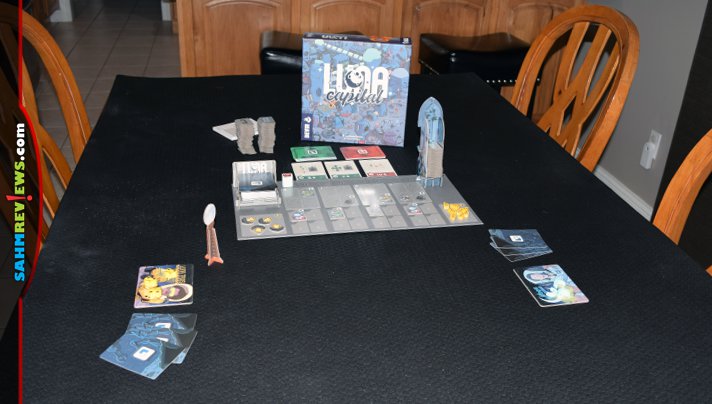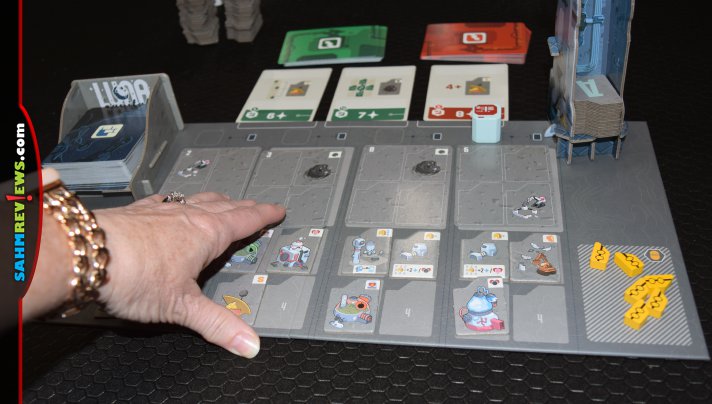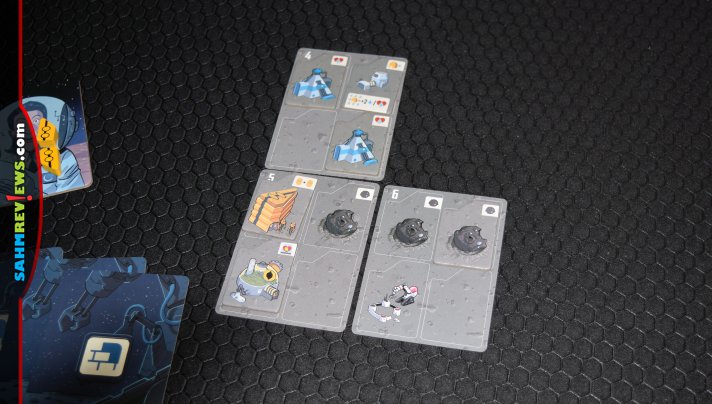LUNA Capital Board Game Overview

Today is an exciting day as NASA makes another attempt to launch Artemis to the moon. When we visited Family Space Camp several years ago, I remember the conversations about Mars missions being the next big thing. Even when I toured Marshall Space Flight Center at Redstone Arsenal in Huntsville, Alabama a few years back that was the topic of presentation. But as I listen to all the excitement about returning to the moon, I have even more appreciation for being able to stand atop the S-1C Static Test Stand (used to test the Saturn V in 1965-66). Whether it’s watching the season finale of For All Mankind, colonizing the moon on our game table with LUNA Capital from Devir Games or cheering on the latest NASA mission, it’s all pretty cool.

You can get the latest updates on Artemis from NASA, sit down and binge For All Mankind then wrap up the day by playing LUNA Capital! Set up will vary based on how many players, but the general idea is the same. You’re building a tableau of cards with and tiles in hopes of having the best station on the moon, thus earning the title of capital. Place the board in the center of the table with the appropriate side up depending on solo play or multiple players. Shuffle the 3 decks separately, giving each player three construction cards then placing concession cards as noted. Project tiles are sorted by phase, shuffled independently then phase A is added to the project tower. Players select a sponsor and take the related tokens. Construction cards are added to the slots alongside the card dispenser and one tile is added to the “1” space below each card. You’re pretty much ready to go.

On your turn, you’ll select one of the construction cards and any tiles in the spaces immediately beneath it. You’ll add the card to your hand then place one card onto the space station you’re designing in front of you. All tiles taken during the draw portion of your turn must be built on one of the open spaces in your station. The card space is refilled from the deck and additional project tokens are added beneath it to ensure each player has four options to choose from. However, the Last Delivery Marker is placed above the newest offering and may only be taken by the next player if they are willing to discard a card from their hand.

There are a few restrictions to how you can build though. First, cards are numbered 1-10 and must increase in value compared to the ones next to it. You can have a total of three rows, but thanks to a few special features, you can add multiple cards in each row. Cards may not be rotated and may not cover up any portion of another card. It must be placed next to an existing card, either above, below or on either side. Once it’s placed, it’s there to stay!

You’ll score points based on the types of tiles you place as well as the configuration. Some items such as sales offices (they have a $ on them) score no matter where they are while others such as vital systems score the largest section of each. There are a variety of ways to build the station to maximize scoring but it all depends on which tiles you’re able to draft. It reminded me of a lighter version of Castles of Mad King Ludwig, but without the auction.

At the beginning of each round, an additional tile is added to each card on the board. After the fourth round, the phase ends and cleanup is done to start a new phase. In addition to the tiles earning points, there are also community goals that provide bonus points. These are evaluated at the end of each phase. All players that meet the necessary requirements at that time earn the points and those particular objectives are no longer available.
There are tokens that allow you to ignore the card numbers and rearrange tiles on the master board. In addition, some tiles allow you to demolish previously constructed spaces or build on top of others. At the end of three phases, scores are calculated to determine who designed the best station. It’s not a hard game to learn, but with so many different scoring options, it would have been helpful to have a player aid. LUNA Capital moves pretty quickly, but since each player is building in their own space, there isn’t a lot of player interaction. Nonetheless, it’s an entertaining game and a good alternative for when you don’t have enough time to get a full game of Castles of Mad King Ludwig played! Copies of LUNA Capital are available on Amazon or at the local game store. Get updates on what other out-of-this-world things happening by following Devir Games on Twitter and Facebook.
Which of the latest space-related news, photos of space and shows have you been most excited about?



1 thought on “LUNA Capital Board Game Overview”